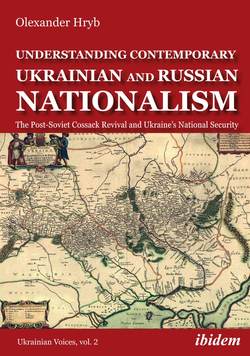Читать книгу Understanding Contemporary Ukrainian and Russian Nationalism - Olexander Hryb - Страница 5
Understanding Contemporary Ukrainian and Russian Nationalism
The Post-Soviet Cossack Revival and Ukraine’s National Security
ОглавлениеSUMMARY
This monograph explores the causes and conditions of nationalist revivals as such and in post-Soviet Ukraine and Russia specifically. It does so by, first, developing a framework based on a synthesis of Eastern and Western European perspectives on nationalism; and, then, applying this framework to the case of the Cossack nationalist revivals in Russia and Ukraine.
In order to develop a framework for analyzing nationalist revivals, the monograph explores Eastern (Russian and Ukrainian), as well as Western, theoretical perspectives relating to national identity, national and ethnic communities, and nationalist movements. Soviet ethnography and Soviet ethnic engineering continue to influence both academic discourse and state policies in the Russian Federation and Ukraine with respect to post-communist nation building. Understanding Soviet and post-Soviet theoretical perspectives on nationalism can contribute much to the study of nationalist phenomena, in the West as well as in the East. Thus, the monograph not only introduces into the English-language literature often overlooked Russian and Ukrainian (Soviet and post-Soviet) theories, but also suggests how these theories might be synthesized with Western traditions to produce a better framework for understanding nationalism. To this end, this monograph proposes a synthetic framework based on an analysis of commonalities and divergences in the Western and Eastern traditions.
Central to this framework is the concept of societal or identity security. The monograph endeavors to show the importance of societal security to an understanding of when and why nationalist movements turn violent by applying it to the case of the Cossack nationalist revival in Russia and Ukraine. Research on Cossack nationalism not only demonstrates the utility of the proposed framework and its central concept (societal security); it also clarifies the distinction commonly drawn between “ethnic” and “civic” nations. In doing this, it provides insight, not only into nation building in the former Soviet Union, but also into the origins and evolution of “Eastern” vs. “Western” nations.
